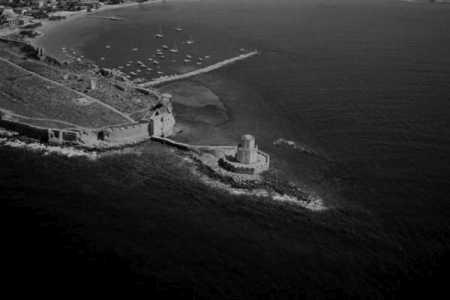- Author
- Wright, Ken
- Subjects
- Battles and operations, Ship histories and stories, WWII operations
- Tags
-
- RAN Ships
- None noted.
- Publication
- September 2006 edition of the Naval Historical Review (all rights reserved)
‘He ordered any medical orderlies to establish first aid posts to treat the wounded. The men, who needed direction, slowly began to follow orders. The aft deck became packed with men, crammed together like sardines in the foul weather. Many had almost no clothing to protect them from the elements. Land was barely three kilometres away and the ship was slowly approaching the land even though the flooded bulkhead acted like a sea anchor. The ship was still at the mercy of the wind and the sea and without the engines, directionless.’

(Photo: Ken Wright)
He could have deserted the ship like the Italians. Why did he stay? If he stayed to save the ship and all onboard, he was a man of great courage. Perhaps he remained out of pride – a determination not to be like the Italians and leave fellow human beings to die, even if they were the enemy. Whatever his reasons, the fate of everyone onboard was now in his hands. A strong wind was blowing from the west, driving the ship towards the land. The German needed to get there before it became dark and he had no way of seeing what the Greek coastline was like. To make matters worse, a storm was approaching. To the north lay shallow water backed by low cliffs. To the south, a wide channel opened between Methoni Point and the island of Sapientza. Between these two points lay a bare 400 metres of rocky coastline. Armed with a pistol, he went below to the engine room and made the Italian engineers, who were unable or unwilling to follow their cowardly captain, get the engines going again. On deck, the German encouraged the medical orderlies in their almost impossible task of caring for the wounded.
The storm finally arrived and with high seas and a 40 knot wind swirling around the ship, the approach to the shore was going to extremely difficult. From approximately 300 metres away, there appeared through the rain low cliffs and what seemed like the ruins of an old castle. At 200 metres, prisoners on deck saw Italian troops on shore watching the drama that was about to unfold. Directly in front of the ship was a submerged reef. Using the power of the engines, the forces of nature and his experience, the German miraculously cleared most of the reef before the stern settled on the rocks with a terrifying screech of tortured steel plates buckling and then being ripped open. The Sebastiano Venier was stuck fast but rolled from side to side as the waves pounded her weather side. The German had managed to bring the ship almost beam on to the shore but there was still about 50 metres of surging water between the ship and the safety of the shore.
Once the realisation dawned that they had survived what could have been a disaster, the prisoners brought the German to the handrail and gave him a rousing three cheers. It was a heartfelt and willing tribute to an enemy whose humanity had crossed the boundaries of hatred, ideology and national pride. The freezing sea and the strong wind pounding the ship reminded the prisoners they still had to get to shore and the fact that the ship might, at any time, break up in the storm. To make matters worse, there were strong undercurrents and many jagged rocks between the ship and the shore. As it started to get dark, the temperature fell and each time the waves pounded the ship, it rocked slightly back and forth. While the German was trying to save the ship an unknown Italian steward did his best to supply the prisoners with coffee and food. This man was a godsend to the sick and wounded.
The German was also concerned about the effects of the storm on the ship and the surviving prisoners. A Royal Navy sailor volunteered to try to swim ashore with a light lifeline attached to his body. Considering the risks involved, it was almost suicidal but he made it to shore. After convincing the waiting Italian soldiers of what he was trying to do, he was allowed to drag a heavier lifeline in and attach it to a raised outcrop of rock. From ship to shore, the angle of the rope was such that men could shimmy down the rope with their legs and arms crossed over the rope. The idea was sound, but the storm pounding the side of the ship rocked it enough to allow the rope to go slack one minute, then whip back taut, flinging men into the sea. Many were killed this way but there was no lack of volunteers. It was just after midnight when the storm peaked and the sea and wind began to die down.




